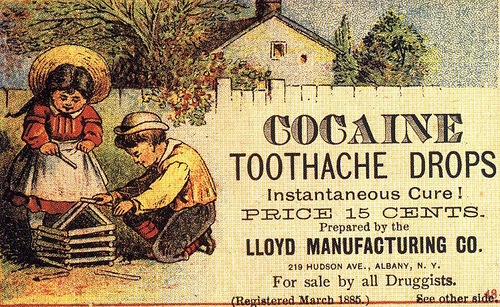What we have here is a failure to communicate.
If you believe proponents, critics and prison wardons, disputes about science and facts and personal relationships are failures in communication, in that you don’t agree with me.
It’s based on an authoritarian model and is the oldest excuse out there; all kinds of problems .jpg) could be solved if everyone just communicated better, especially scientists and others.
could be solved if everyone just communicated better, especially scientists and others.
For almost 30 years I have been told failures in communication underpin conflict when usually it is failure to commit – to an idea, a belief, a principle.
And it’s not new.
On Wednesday, the U.S. Department of Agriculture’s line on BPI’s pink slime was, "All USDA ground beef purchases must meet the highest standards for food safety. USDA has strengthened ground beef food safety standards in recent years and only allows products into commerce that we have confidence are safe.”
Two hours later, USDA changed its tune, leaking the news that schools will have choice in response to requests from districts.
The official announcement came earlier today. “USDA only purchases products for the school lunch program that are safe, nutritious and affordable – including all products containing Lean Finely Textured Beef. However, due to customer demand, the department will be adjusting procurement specifications for the next school year so schools can have additional options in procuring ground beef products. USDA will provide schools with a choice to order product either with or without Lean Finely Textured Beef.”
Eldon Roth, founder of BPI, issued a statement today again focusing on safety, which is fine, but blamed media coverage. “As parents and consumers continue to make important decisions about the food they and their children eat, we hope that they listen to credible sources outside media sensationalists and take note of the overwhelming support from the government and scientific community who have routinely testified that our lean beef trimmings are 100% beef and are produced, and tested in a way that makes this food very safe. The facts can be found at pinkslimeisamyth.com.”
Facts are never enough.
BPI has followed the well-worn script of fact-based communication, and failure has followed.
The American Meat Institute backed a statement by BPI by saying, “First of all, it shouldn’t be referred to as ‘pink slime.’ That is part of the problem. What we need to do is better communicate the true facts to consumers. The accurate label is beef. It’s just lean, finely textured beef; not ‘pink slime.’”
Uh-huh.
Referring to last year’s E. coli O104-in-sprouts outbreak Germany’s ministerial director and federal director of food, agriculture and consumer protection, Bernhard Kühnle told a recent gathering, “We need to make sure we establish trusted scientists to communicate to the media before there is a crisis …The more days the crisis continued the more experts appeared in the media. Someone said it was certainly cucumbers, and someone else said it was raw milk. Someone even said it was caused by Al Qaeda.”
Yes, if only trusted scientists would communicate better. Didn’t help BPI.
BPI also made the fatal mistake of denying consumer choice.
BPI director of food safety and quality assurance Craig Letch told FoodQualityNews.com, “Long-story short, the whole situation has been a gross-misunderstanding of the product and the .jpg) processing measures involved with the product. It has directly stemmed from media-outlets trying to sensationalize and build up hype around the product.”
processing measures involved with the product. It has directly stemmed from media-outlets trying to sensationalize and build up hype around the product.”
Letch added that consumers do not need to be informed that the product is included in another meat product as it is “meat, 100% lean meat.”
Choice is a good thing. I’m all for restaurant inspection disclosure, providing information on genetically-engineered foods (we did it 12 years ago), knowing where food comes from and how it’s produced.
But I want to choose safe food. Who defines safety or GE or any other snappy dinner-table slogan drop?
Self-proclaimed food activists are no better, claiming their educational efforts won the day. The number of people barfing from food will not be reduced by rhetoric. No one won.
USDA and the companies that previously outlawed pink slime acted expediently to manage a public-relations event. But they unwillingly undercut other efforts to provide safe, sustainable food.
What is USDA going to do about school lunch purchases containing genetically-engineered ingredients, hormones, antibiotics and a whole slew of politically-loaded ingredients?
Commitment means bragging about it. Market microbial food safety and hold producers and processors – conventional, organic or otherwise – to a standard of producing food that doesn’t make people barf. That’s something shoppers will support, instead of being told they can’t choose and have to become better educated about someone else’s limited perspective.
.jpg) province’s slaughterhouses and meat processing plants.
province’s slaughterhouses and meat processing plants.

.jpg) could be solved if everyone just communicated better, especially scientists and others.
could be solved if everyone just communicated better, especially scientists and others..jpg) processing measures involved with the product. It has directly stemmed from media-outlets trying to sensationalize and build up hype around the product.”
processing measures involved with the product. It has directly stemmed from media-outlets trying to sensationalize and build up hype around the product.”(1).jpg) Medium-rare hamburger is not the same as a medium-rare steak.
Medium-rare hamburger is not the same as a medium-rare steak. the streets.
the streets..jpg) egg rolls."
egg rolls." the cooler, but the risk to public health is very low, the Department of Health said in a statement.
the cooler, but the risk to public health is very low, the Department of Health said in a statement. diligent in its investigation and enforcement to ensure food products are safe and that consumers are protected.”
diligent in its investigation and enforcement to ensure food products are safe and that consumers are protected.” would have to find the money in its existing budget, which is expected to see more cuts this year as Congress and the White House aim to trim federal spending.
would have to find the money in its existing budget, which is expected to see more cuts this year as Congress and the White House aim to trim federal spending. percent. But a video monitoring system that provides instant feedback on success has raised rates of handwashing or use of alcohol rubs to over 80 percent, and kept them there.
percent. But a video monitoring system that provides instant feedback on success has raised rates of handwashing or use of alcohol rubs to over 80 percent, and kept them there.(4).jpg) beef processing plants in America use its video system to monitor workers’ hygienic practices.
beef processing plants in America use its video system to monitor workers’ hygienic practices.